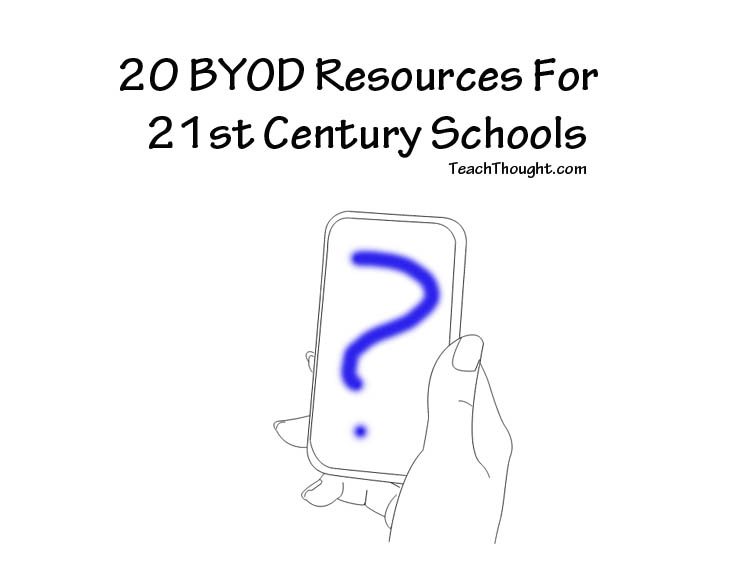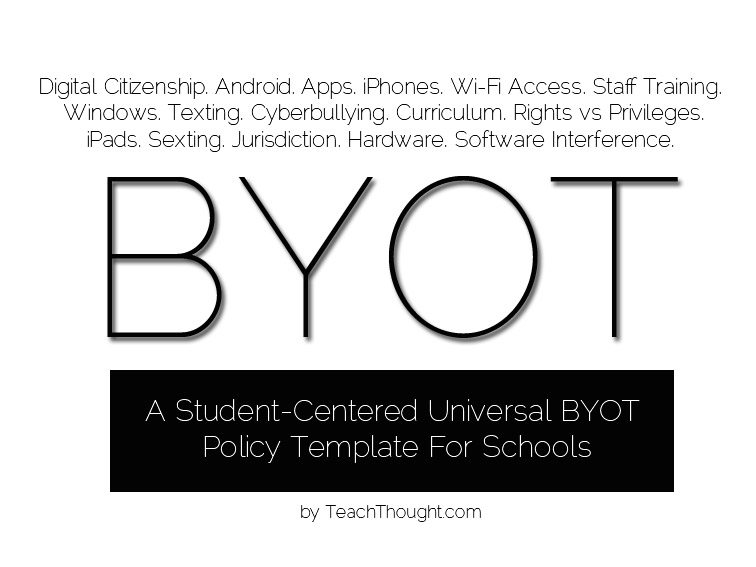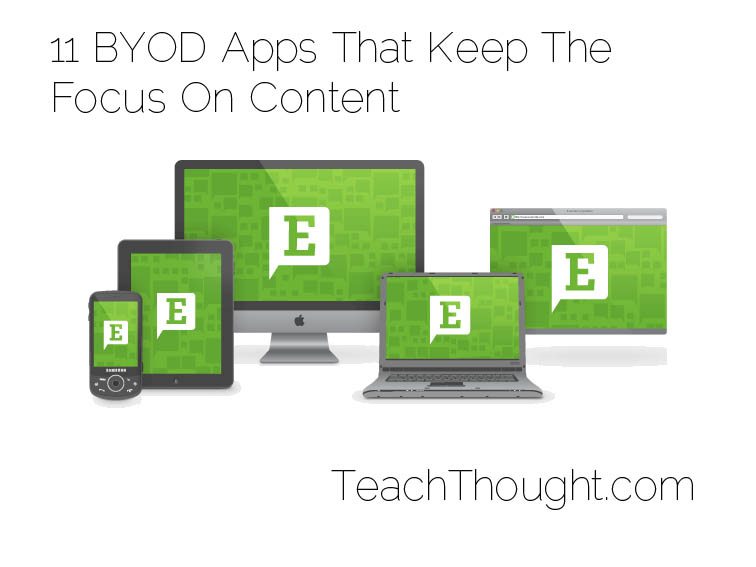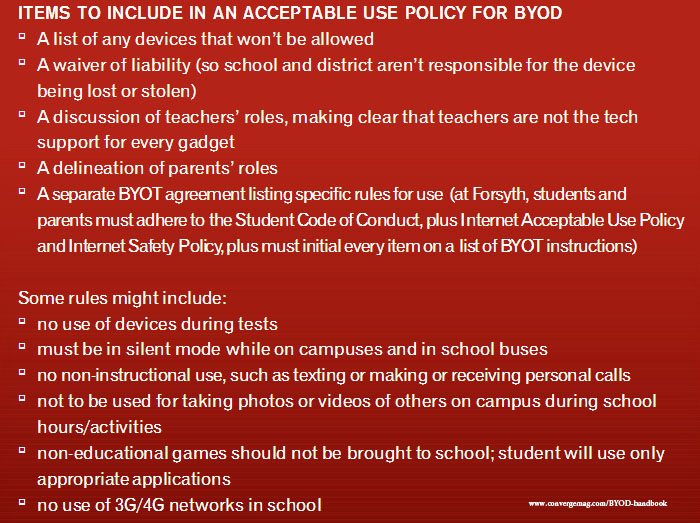Tag: BYOD
20 BYOD Resources For The 21st Century School
When you let students bring unique devices into a once closed tech setting, chaos can ensue. Here are BYOD resources to help get you started.
A Student-Centered BYOT Policy Template For Schools
BYOT Policy is a response to a need for progressive learning tools in 21st century classroom. This is a Student-Centered policy template.
The Brutal Authenticity Of BYOD
BYOD (bring your own device) provides students not just with a device, but apps–and thus pathways–to solve problems.
11 Sample Education BYOT Policies To Help You Create…
There is no single way to implement a BYOT program, so we’ve included 11 widely varying policy styles in this post.
4 Challenges That Can Cripple Your School’s BYOD Program
To capitalize on the potential benefits of BYOD programs, districts must first address several security concerns and pain points.
11 BYOD Apps That Keep The Focus On Content
These 11 apps can be used in BYOD classes to keep the focus on content and publication, rather than digital fences that…
A Teacher’s BYOT Handbook: 10 Checklists For Creating Your…
In this BYOT handbook by convergemag.com, you’ll find 10 checklists for creating–or simply checking–your BYOT plan.
Smartphones In The Classroom: Working Smarter, Not Harder
Students can do so much with smartphones in the classroom. How can they truly help them work smarter, not harder?




